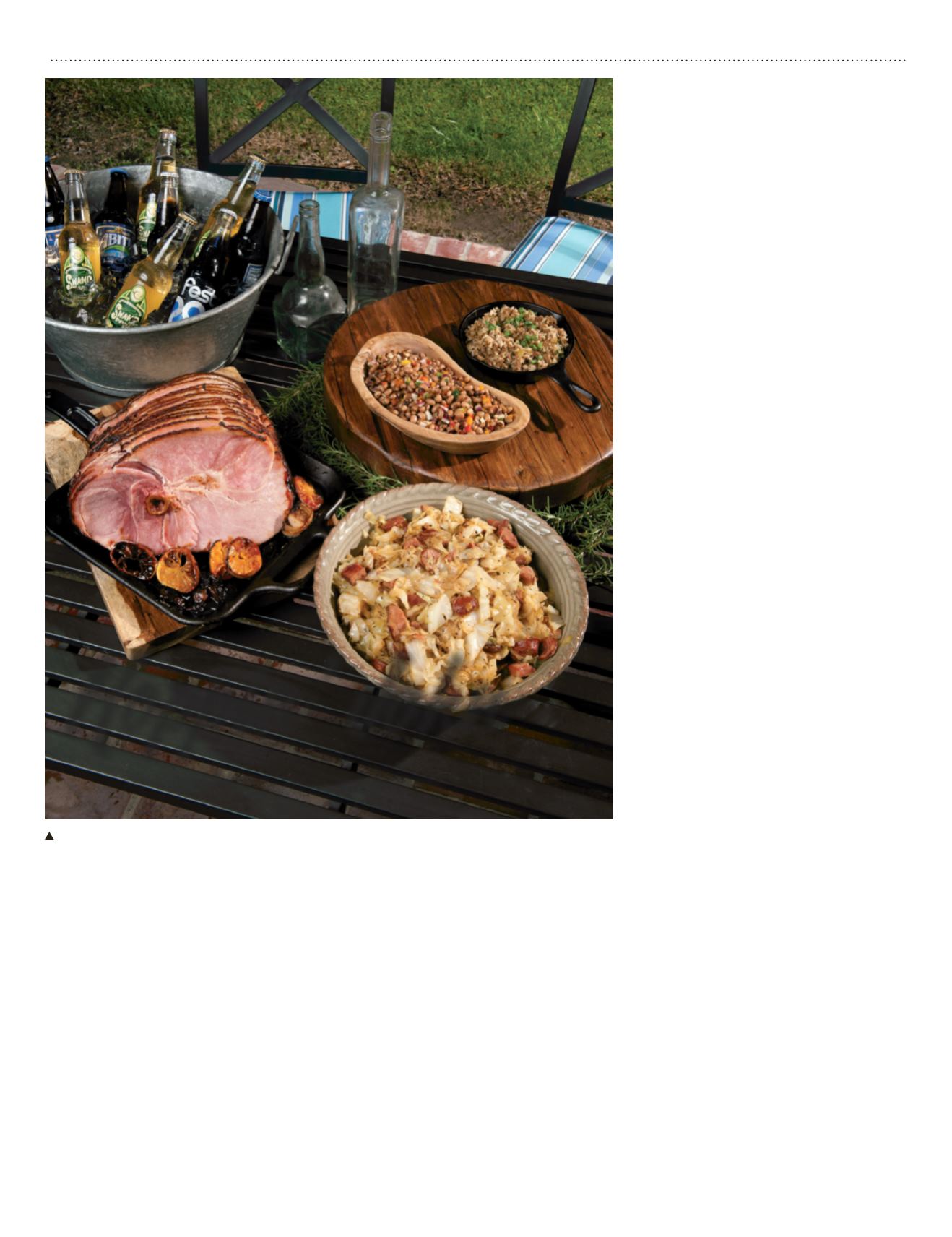
46
MY
ROUSES
EVERYDAY
NOVEMBER | DECEMBER 2014
the
Holiday
issue
It sounds more like a ‘50s dance craze than
a family meal. Or like some character out
of a Dickens novel, the good-hearted but
sketchy town drunk, he of pronounced limp
and dandy cane.
Never mind that the primary characteristic
of Hoppin’ John is also the name of a wildly
popular band from the turn of the century.
(This century, that is; not Dickens’.)
That “characteristic” — ingredient is the
more accurate word here — is black-eyed
peas. You might call them field peas.
(This is as good a time as any for a disclaimer:
This is Southern cuisine we’re talking about
here and there are no absolutes — I will not
be receiving correspondence that takes issue
with any information presented herein as
factual. There is very little that is “factual”
about Southern culture anyway; it’s all
mythology and lore. That’s what makes us,
as a region, so ... interesting.)
But I digress. The dish called Hoppin’
John generally includes rice and some good
Southern stuff like salt, onions and fatback
with those black-eyed peas (which are often
pickled for good measure).
For the winter holidays, the Hoppin’ John
takes on properties loftier than simple
nourishment of the body. This time of year,
the dish will generally include greens of
some kind, including cabbage, a food source
of considerable prominence in Irish culture.
(Unless you have had a wayward cabbage
shatter your car window or knock you
senseless to the ground during a St. Patrick’s
Day parade in New Orleans — each of
which I have personally witnessed — there is
no reason to doubt its auspicious properties.)
On New Years Day in particular, supper
tables across the South are graced by some
form of Hoppin’ John dish or at least black
eyed peas and cabbage, not only to fortify
the bones on a cold winter’s day, but to
invite good luck and great fortune in the
coming year for those who partake.
As with any indigenous superstition,
there are dozens of interpretations and
explanations for each element of the dish,
but the generally held notion is that the
peas are symbolic of pennies, or coins in
general — and it’s true that sometimes a
heaping of these delectable legumes can
sometimes, almost, sort of resemble a pile
of gold nuggets.
Sort of.
Many Hoppin’ John recipes, in fact, call for
a real coin to be added to the pot during the
meal’s preparation. The person who receives
this token in their portion is said to receive
extra luck — the first evidence of which is
that the unsuspecting recipient of a coin
hidden in their stew managed to escape
choking to death.
(Any similarities to the tradition of
inserting little plastic babies into king
cakes during Mardi Gras season in New
Orleans are not coincidental and are the
sole provenance of the sublime nature of
Southern superstitions.)
The greens that flesh out a dish of Hoppin’
John — be they cabbage, collards, mustard,
turnip, chard, kale or some other (are there any
other?) — are meant to symbolize, well, green
— the color of paper currency. In America.
(I have no idea what the French add to their
field peas on New Year’s Day for good luck.
I mean, seriously?)
As if all of this is not enough to keep in
mind, one who participates in a Hoppin’
John repast is also supposed to remember
— upon finishing their meal — to leave
three peas remaining on the plate to ensure
Hoppin’ John
by
Chris Rose +
photos by
Romney Caruso
Hwy. 1 New Year’s Day: Spiral sliced ham, black-eyed pea salad, smothered cabbage and ham hocks at Tim Acosta’s house.


